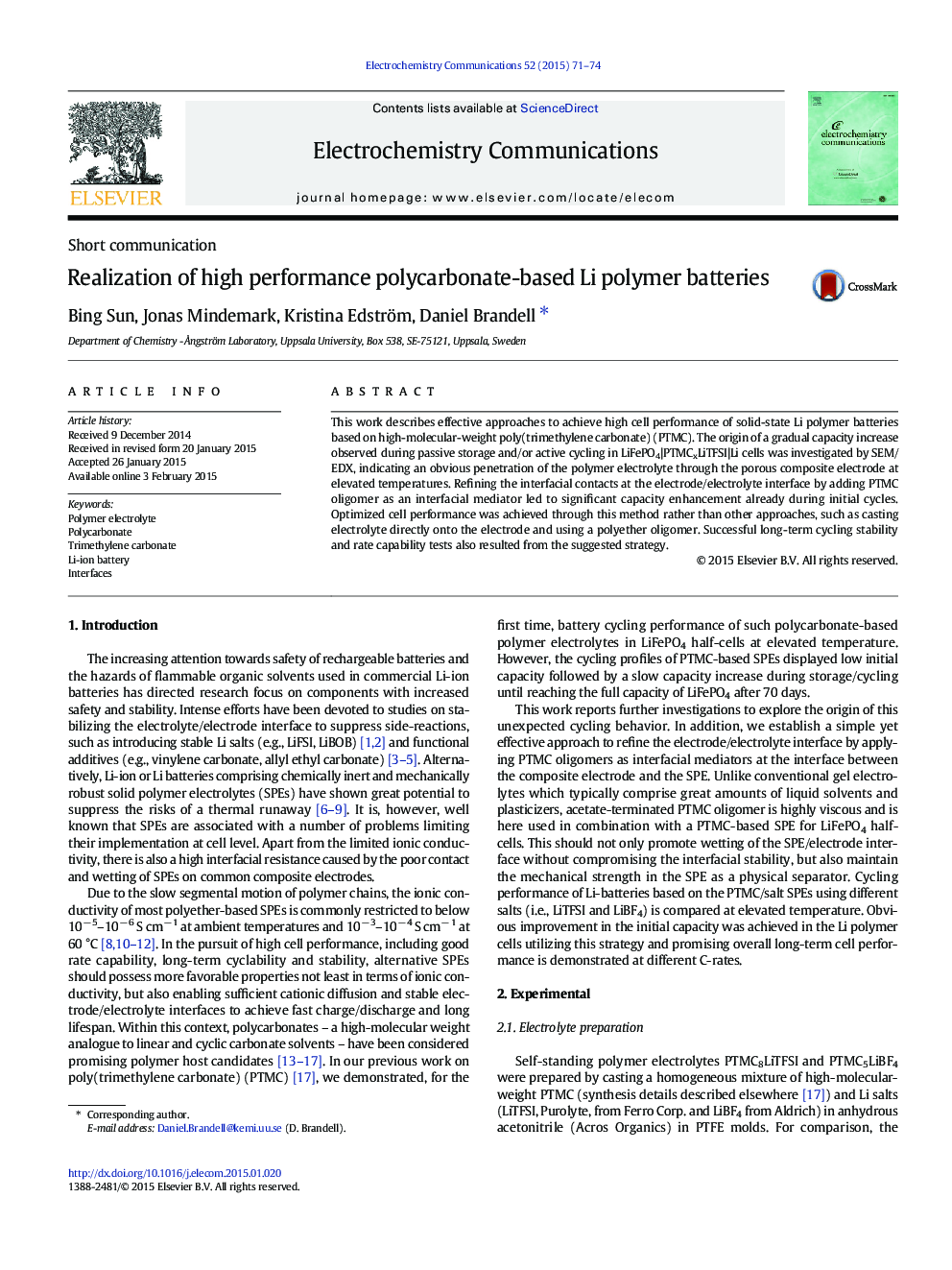| Article ID | Journal | Published Year | Pages | File Type |
|---|---|---|---|---|
| 178932 | Electrochemistry Communications | 2015 | 4 Pages |
•An oligomeric polycarbonate additive is applied to Li-batteries.•Gradually improved coverage of electrolyte is observed during cycling.•Better cell performance is achieved through improved connectivity in porous cathodes.
This work describes effective approaches to achieve high cell performance of solid-state Li polymer batteries based on high-molecular-weight poly(trimethylene carbonate) (PTMC). The origin of a gradual capacity increase observed during passive storage and/or active cycling in LiFePO4|PTMCxLiTFSI|Li cells was investigated by SEM/EDX, indicating an obvious penetration of the polymer electrolyte through the porous composite electrode at elevated temperatures. Refining the interfacial contacts at the electrode/electrolyte interface by adding PTMC oligomer as an interfacial mediator led to significant capacity enhancement already during initial cycles. Optimized cell performance was achieved through this method rather than other approaches, such as casting electrolyte directly onto the electrode and using a polyether oligomer. Successful long-term cycling stability and rate capability tests also resulted from the suggested strategy.
Graphical abstractFigure optionsDownload full-size imageDownload as PowerPoint slide
